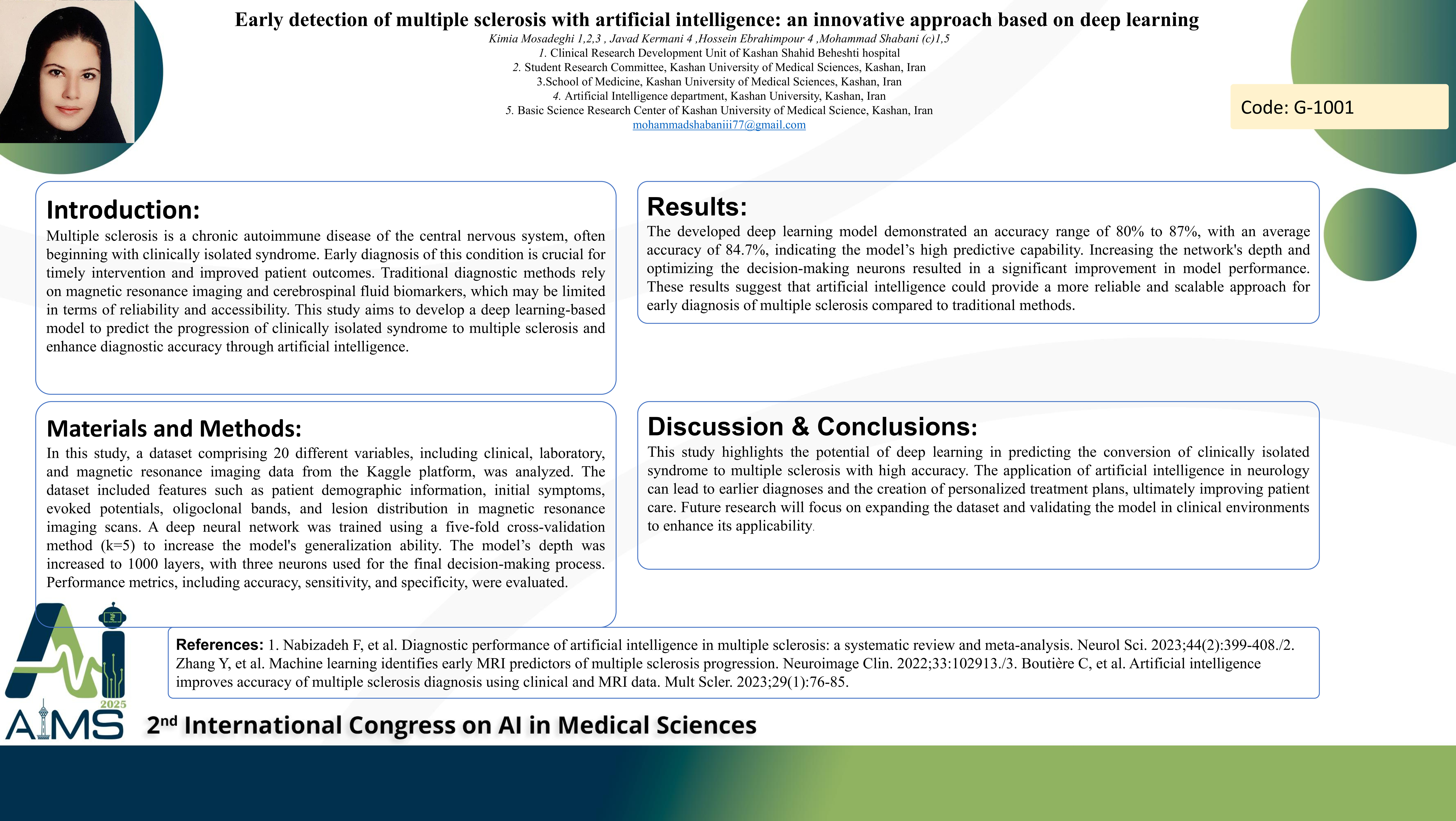تشخیص زودهنگام مالتیپل اسکلروزیس با هوش مصنوعی: رویکردی نوآورانه مبتنی بر یادگیری عمیق
کد: G-1758
نویسندگان: Kimia Mosadeghi ℗, Javad Kermani, Hossein Ebrahimpour Koomleh, Mohammad Shabani *
زمان بندی: زمان بندی نشده!
برچسب: سیستم های تصمیم یار بالینی
دانلود: دانلود پوستر
خلاصه مقاله:
خلاصه مقاله
Background and Objectives: Multiple sclerosis is a chronic autoimmune disease of the central nervous system, often beginning with clinically isolated syndrome. Early diagnosis of this condition is crucial for timely intervention and improved patient outcomes. Traditional diagnostic methods rely on magnetic resonance imaging and cerebrospinal fluid biomarkers, which may be limited in terms of reliability and accessibility. This study aims to develop a deep learning-based model to predict the progression of clinically isolated syndrome to multiple sclerosis and enhance diagnostic accuracy through artificial intelligence. Methods: In this study, a dataset comprising 20 different variables, including clinical, laboratory, and magnetic resonance imaging data from the Kaggle platform, was analyzed. The dataset included features such as patient demographic information, initial symptoms, evoked potentials, oligoclonal bands, and lesion distribution in magnetic resonance imaging scans. A deep neural network was trained using a five-fold cross-validation method (k=5) to increase the model's generalization ability. The model’s depth was increased to 1000 layers, with three neurons used for the final decision-making process. Performance metrics, including accuracy, sensitivity, and specificity, were evaluated. Results: The developed deep learning model demonstrated an accuracy range of 80% to 87%, with an average accuracy of 84.7%, indicating the model’s high predictive capability. Increasing the network's depth and optimizing the decision-making neurons resulted in a significant improvement in model performance. These results suggest that artificial intelligence could provide a more reliable and scalable approach for early diagnosis of multiple sclerosis compared to traditional methods. Conclusion: This study highlights the potential of deep learning in predicting the conversion of clinically isolated syndrome to multiple sclerosis with high accuracy. The application of artificial intelligence in neurology can lead to earlier diagnoses and the creation of personalized treatment plans, ultimately improving patient care. Future research will focus on expanding the dataset and validating the model in clinical environments to enhance its applicability.
کلمات کلیدی
Artificial Intelligence, Multiple Sclerosis, Deep Learning
